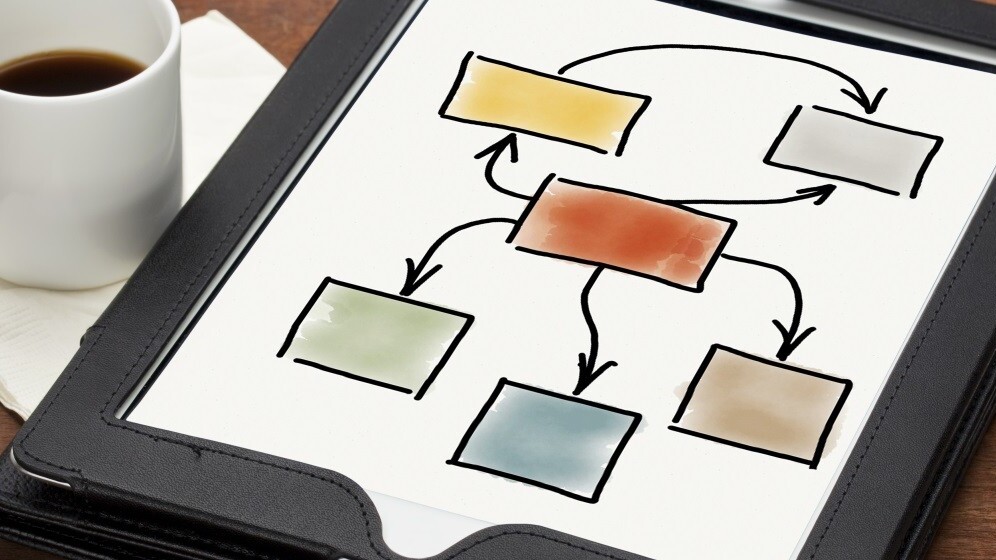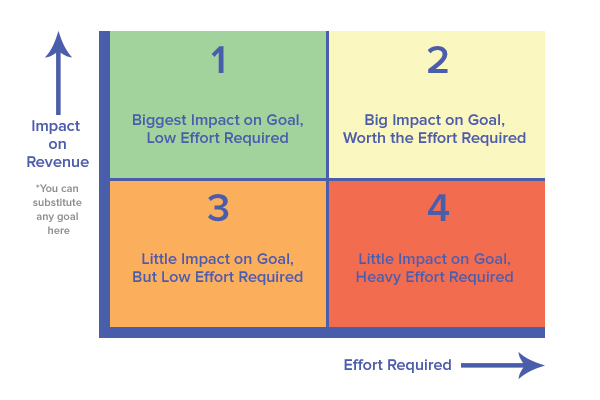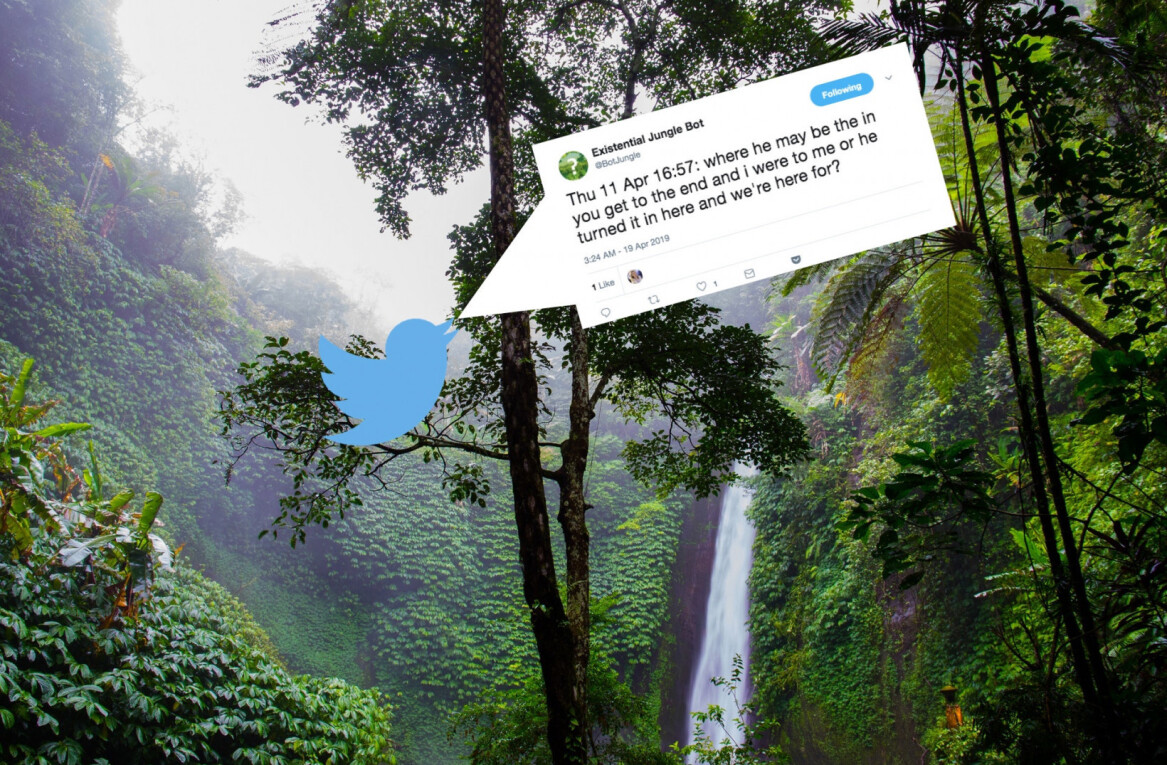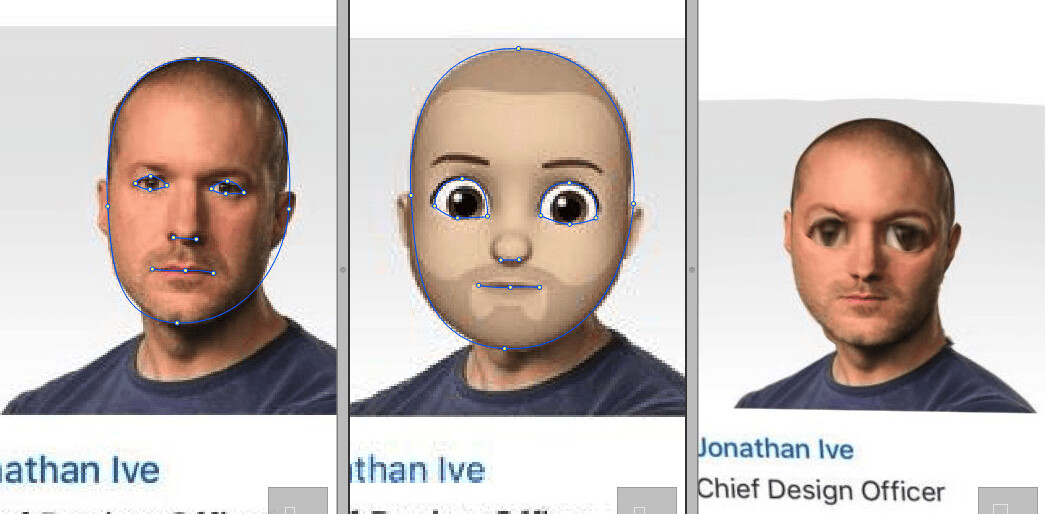
Joelle Steiniger is the co-founder of Small HQ, HookFeed and Minimalytics. This post originally appeared on the Crew blog.
You have no problem keeping busy. No problem crossing things off your to-do list. You multitask like it’s going out of style. But the weeks continue to fly by and you can’t help but be dissatisfied with what you’ve actually accomplished. Not only that, but you’re exhausted. Your creative juices don’t flow the way the used to and you feel stressed and inadequate. You’re treading water.
I got sick of this pattern. So I changed it.
Something that I always knew in the back of my mind, but never really faced, was this one simple fact: The biggest myth about productivity is that it’s a measure of how much you get done.
If you can come to terms with it, really embrace what it means, you’ll be on the fast track out of this ugly cycle too.
What productivity is really about
Being productive isn’t just about quantity. And it’s not just about quality either. It’s about getting the most important, impactful things done efficiently, and to a high degree of quality, without getting hung up on perfection.
This last part is especially tough for many of us.
Like most things in life, there are two ends of the spectrum. On one end you’ve got no structure. You bounce from task to task and back again, free-flowing and aimless. Constantly jumping between mental states, conversations, browser tabs, etc.
Alternatively, if you look up articles on ‘productivity’ you’ll find a lot written about what I consider to be the other end of the spectrum. Rigid routines, rules, and structures that are hard to follow. For example, the Pomodoro technique, where you’re prompted to set a timer and work in 25 minute blocks, followed by a short break each time the timer goes off.
I have a problem sticking with this kind of rigidity. I don’t live the rest of my life like this, (and I doubt you do either), so it’s tough to expect such a radical deviation in the hours spent at work.
To me, most formalized productivity structures are like crash diets. You may do fine for a short while, but it’s ultimately unsustainable. You’re setting yourself up for failure.
Even more importantly, excessive structure doesn’t leave room for working on things when inspiration strikes, which is my favorite part of being an entrepreneur. If I remove the freedom to do that, I’ve squashed one of the biggest benefits of doing any of this in the first place.
Like most things, I needed to visualize the problem before I could figure out the best solution, so I sketched out a primitive version of this little “productivity spectrum”. Then I scribbled over the section of the line where I thought I fell (it was where you see the red square now).
My goal was to move to my theoretical “Optimal Zone” while adding as little structure and as few rules as possible.
I ended up only making three changes to how I work, but the impact has been remarkable.
1. Force Focus
Before layering on any new habits to my routine, I started by eliminating a bad one; multitasking.
I know, I know – you don’t want another lecture about how saturated we are with stimuli and the evils of the inbox and social media. I’ll spare you the lecture. But I did a little research and what I found was pretty alarming.
An article published in the American Psychological Journal, detailed numerous research studies that help to illustrate the harmful effects of multitasking and task switching.
In an experiment where students were asked to solve math problems, the ones that were also asked to switch to other tasks performed 40 percent slower than those who were allowed to focus only on the problem. This is because we’re essentially competing to use the same part of our brain. Just like a computer when it gets overloaded, it simply slows down.
“When we switch from one task to another and back again, our brain is pushing pause and play buttons,” says neuroscientist Jordan Grafman.
Another study published on BBC News even found that those distracted by incoming email and phone calls saw a 10-point fall in their IQ – more than twice that found in studies of the impact of smoking marijuana.
Slowing you down is only the half of it. Studies have shown that this cognitive overload contributes greatly to high levels of stress, exhaustion, and a slew of other physical maladies.
According to an article published in Psychology Today by Sherrie Bourg Carter, Psy.D., mental fatigue manifests itself in a number of physical and harmful ways, including but not limited to: impaired concentration, poor attention span, insomnia, anxiety, depression, irritability, stomach pains, dizziness and migraines.
I also knew deep down that I was using multitasking and task switching as a guilt-free way of putting off the hard work I had to do.
If I was cruising through a to-do list a mile long it didn’t matter how unimportant the tasks were, I justified to myself that I was being productive. This is dangerous territory.
So my first significant jump toward the “Optimal Zone” on the spectrum came when I only allowed myself to work on a single task at a time. This means closing irrelevant browser tabs, email, chat windows, and putting your phone on silent in your bag and out of sight.
Physically removing the distractions also removes the mental load and effort that goes in to resisting the temptation in the first place. In other words: out of sight, out of mind.
2. Identify Value
Focusing on one task at a time is a strong start, but it ignores the ever-so-haunting fact that we’re often working on the wrong thing at the wrong time. So again, I took to a little visualization.
This diagram (inspired by one from Tarang Baxi) has been incredibly helpful. It’s a simple exercise that illuminates what you really ought to be focused on at any given time.
Your main goal may be building a stronger brand or growing your audience on social media. Whatever it is, put that on the y-axis where I currently show “revenue.”
Put all your tasks into the appropriate box, according to the impact each has on reaching your goal and the amount of effort it will take. Then work in order of the numbered boxes. (I bet you’ll find that most of the things you tend to work on first really belong in bucket number 3).
My number one priority right now with HookFeed is building revenue so we can continue to grow. So each feature we build out, each piece of marketing we work on, every outreach attempt to potential customers, all get weighed against what will have the biggest impact on that goal. And this isn’t always the “fun stuff”.
If a task isn’t having a big impact on your goal, bump it to the end of the line.
3. Batch Recurring Tasks
This might have been one of the simplest changes I made to my routine and it had a massive impact on my cognitive load and efficiency.
Each week I have a handful of tasks and responsibilities that are mainstays in my schedule. For example, I co-host The Rocketship Podcast and the series of tasks I have to complete each week are pretty much always the same:
- Prep and publish two episodes (we release one every Tuesday and Thursday)
- Write and send out a newsletter
- Prep for and record two interviews
- Review the analytics for our sponsors
All in all this is about four to five hours of work. I used to just fit in bits and pieces when I had time, and often it would turn into seven or eight hours because I wasn’t fully focused on knocking them out.
We’d schedule interviews throughout the week at various times, sometimes having as many as eight in one week. I always had a feeling I was forgetting something or juggling miscellaneous tasks in the back of my head. It was killing momentum on HookFeed and burning me out on–what started as–a passion project.
I made a simple change. I batch all the production for the week’s episodes on Monday nights. It doesn’t require much creativity so I save it for later in the day. Now we only schedule new interviews on Fridays in two time slots. Same time every week.
I also do this for some of my recurring HookFeed tasks as well. The result is that I have a few hours each week blocked out for the “mainstays.” The tasks are black and white, and I know exactly how long each will take. It removes a massive amount of mental load so I can focus on the big stuff.
Most surprising benefit of these changes:
I work less.
My original goal in trying to achieve a better level of productivity was squarely focused on what more I’d get done, but I didn’t really think about the notion that I’d free up more time. I was so used to treading water and always feeling like there was more to do and never enough time. Initially, all I wanted was to make progress toward my goals any way I could.
A huge part about anything you do in life is making sure you have time to recharge your batteries. A funny thing happens when you realize midway through the day that you’ve gotten your most important things done already, and made solid progress toward your goals… you’re able to step away!
When you start weigh the lower level priorities with the option to recharge, it becomes much easier to go take advantage of some free time and not feel guilty about it.
I’d even argue that the activities you do in your free time are in fact higher priority and more impactful on reaching your goals than other lower level priorities. There is no substitute for the positive impacts on the quality of work I produce than living a balanced life. This has been by far the most important lesson for me in all of this.
Though I strongly encourage you to try the focus and prioritization techniques I found so helpful in improving my productivity, remember that there’s no hope of being truly productive if you’re burnt out. And feeling guilt-free about prioritizing my free time has made me better at everything I work on.
So conquer your most impactful tasks first, and then go grab a happy hour drink, exercise, watch a movie, read a book, cook a good meal, or spend time with friends and family. The value of doing so outweighs the little odds and ends that previously kept you spinning your wheels. Trust me.
Get the TNW newsletter
Get the most important tech news in your inbox each week.







